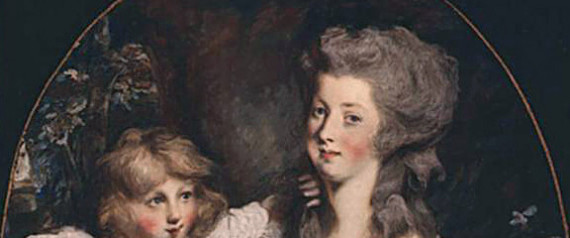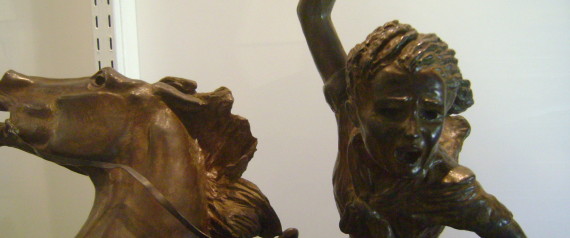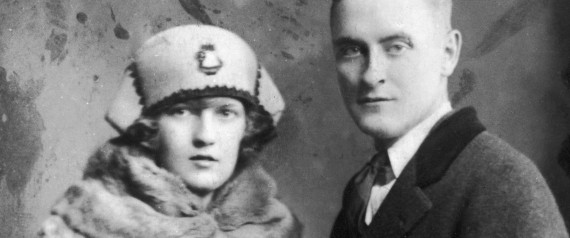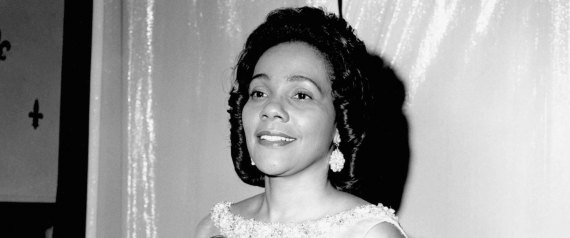7 Forgotten But Extremely Influential Women From History
Posted:
MORE:
Books News
They say that behind every great man is a great woman. Well, none of these women stood behind their husbands; they stood right alongside them, and, in some cases, in front of them.
While researching for The Traitor's Wife, my novel on Benedict and Peggy Arnold and their attempt to end the American Revolution, I discovered that there was much more to the infamous tale than just one man's decision to turn traitor.
While researching for The Traitor's Wife, my novel on Benedict and Peggy Arnold and their attempt to end the American Revolution, I discovered that there was much more to the infamous tale than just one man's decision to turn traitor.
American history little remembers the fact that Benedict Arnold even had a wife. And not only did he have a wife -- he had an intelligent, attractive, charismatic, and, ultimately, very powerful wife. A woman who influenced, and quite possibly determined his decision to switch sides.
Peggy Shippen Arnold, the captivating young socialite-turned-colonial-era conspirator, has slipped through the years with very few people aware of the central role she played in her husband's treachery and subsequent downfall. How did this happen? And are there other women, like Peggy Shippen Arnold, who have been largely forgotten in history?
Here's a look at some of these fascinating figures -- women who occupied a front row seat in their time periods but whose names have taken a back row seat to their husbands' legacies. These women were everything from writers and artists to political thinkers, human rights activists and pioneers of cultural change.
These women, rather than being footnotes or supporting characters, were leading lady material.

Peggy Shippen Arnold
When someone says the name Benedict Arnold, the word traitor immediately comes to mind. Most people are, more or less, familiar with the infamous Revolutionary War General. Many also know about Arnold's co-conspirator, Major John André, the British spy who was apprehended with Arnold's documents in his boots and hanged at the orders of General George Washington. However, very few know about the third character in the plot: a charming young woman who not only contributed to the betrayal, but also helped orchestrate it.
Peggy Shippen Arnold possessed all of the elements to make her a wildly intriguing character in our nation's history -- intelligence, beauty, wealth, powerful friends and admirers -- and yet, so few people know she existed.
In describing Peggy Shippen Arnold, George Washington famously said that half of his men were "in love" with her. When she feigned distress at her husband's downfall and exposed treason, Peggy was helped into bed and brought flowers by Alexander Hamilton and George Washington.
So how did Peggy factor into her husband's infamous plot?
Peggy was a loyalist to England. Prior to her marriage to Benedict, she had been courted by the British officer John André. But it seems that, though Benedict won her heart, he didn't change her loyalties.
Just one month after his marriage to Peggy, Benedict Arnold began reaching out to the British, offering to work for them as a spy and betray his colonial cause. To whom did Benedict Arnold write? You guessed it -- Peggy's former lover, John André.
"Agent 355"
But there were women with brains and beauty working for the other side as well.
Peggy Shippen Arnold, the captivating young socialite-turned-colonial-era conspirator, has slipped through the years with very few people aware of the central role she played in her husband's treachery and subsequent downfall. How did this happen? And are there other women, like Peggy Shippen Arnold, who have been largely forgotten in history?
Here's a look at some of these fascinating figures -- women who occupied a front row seat in their time periods but whose names have taken a back row seat to their husbands' legacies. These women were everything from writers and artists to political thinkers, human rights activists and pioneers of cultural change.
These women, rather than being footnotes or supporting characters, were leading lady material.

Peggy Shippen Arnold
When someone says the name Benedict Arnold, the word traitor immediately comes to mind. Most people are, more or less, familiar with the infamous Revolutionary War General. Many also know about Arnold's co-conspirator, Major John André, the British spy who was apprehended with Arnold's documents in his boots and hanged at the orders of General George Washington. However, very few know about the third character in the plot: a charming young woman who not only contributed to the betrayal, but also helped orchestrate it.
Peggy Shippen Arnold possessed all of the elements to make her a wildly intriguing character in our nation's history -- intelligence, beauty, wealth, powerful friends and admirers -- and yet, so few people know she existed.
In describing Peggy Shippen Arnold, George Washington famously said that half of his men were "in love" with her. When she feigned distress at her husband's downfall and exposed treason, Peggy was helped into bed and brought flowers by Alexander Hamilton and George Washington.
So how did Peggy factor into her husband's infamous plot?
Peggy was a loyalist to England. Prior to her marriage to Benedict, she had been courted by the British officer John André. But it seems that, though Benedict won her heart, he didn't change her loyalties.
Just one month after his marriage to Peggy, Benedict Arnold began reaching out to the British, offering to work for them as a spy and betray his colonial cause. To whom did Benedict Arnold write? You guessed it -- Peggy's former lover, John André.
"Agent 355"
But there were women with brains and beauty working for the other side as well.
Meet the woman known to historians simply as "Agent 355." And no, she was not some Bond Girl -- she was one of George Washington's most trusted spies during the American Revolution.
Agent 355 was a regular at New York City dinner parties, dances and soirees, seen often in the company of Britain's highest-ranking officers. Turns out, however, this woman's interests were more far-reaching than just the latest cocktail party banter or London fashion styles.
When she was not spending time as a socialite in British-occupied Manhattan (or maybe even when she was), Agent 355 was a member of America's first, elite spy ring, operating in and around the critical harbor city.
Little is known about this mysterious figure. Described as a person of disarming wit and beguiling charm, Agent 355 seems to have vanished at some point shortly before the end of the American Revolution.
To this day, Agent 355 is the only member of Washington's Culper Spy network whose identity remains unknown. What is known is just how crucial the information was that Agent 355 slipped out of the city and into the hands of the commander-in-chief -- information that helped the colonies defeat the world's most powerful military.

Sybil Ludington

Sybil Ludington
Paul Revere wasn't the only colonial hero to take a midnight ride through dangerous territory to warn of the coming British army.
In fact, a young patriot from upstate New York was tapped for a dangerous midnight mission after the British raided Danbury, Conn., in April of 1777.
Her name was Sybil Ludington, and she was the 16-year-old daughter of an American colonel. She also happened to ride about twice as far as Paul Revere.
Setting out after dark in freezing late-winter rain, Sybil rode 40 miles, reportedly fending off a band of highway robbers along the way, to rouse the local militia. Thanks to Sybil's warning, the men marched and engaged the British at the Battle of Ridgefield.
Sybil, though often forgotten today, was honored by George Washington for her heroic ride.
Varina "Winnie" Davis
Here's a pair of star-crossed lovers plucked right out of the annals of American history.
Varina "Winnie" Davis was born during the Civil War, the daughter of Jefferson Davis. If his name sounds familiar, it's because he was the president of the Confederate States of America.
While she spent her childhood in the South, working on behalf of wounded veterans of the Confederacy, Winnie moved with her mother to New York City as a young woman.
There, Winnie, known for qualities such as intelligence, inquisitiveness, and a passion for civic service, wrote several books and worked for a newspaper owned by Joseph Pulitzer.
While in New York, Winnie also fell in love and became engaged. Her fiancé was a successful New York lawyer and graduate of Harvard University by the name of Alfred Wilkinson. Sound like a good match? Not when the groom comes from a prominent family of northern abolitionists, and the bride grew up with the nickname "The Daughter of the Confederacy."
Though father Jefferson Davis gave his blessing to Winnie shortly before his death, the pair never married due to insurmountable social pressure.

Zelda Fitzgerald
While Zelda has not exactly been forgotten by history, the picture of her life and legacy that persists today only captures one thin slice of the woman who lived beside and loved F. Scott Fitzgerald.
Zelda, a quick-witted Alabaman with a famous blonde bob, is best known for her hard-partying lifestyle and the raucous reputation that she and her husband, along with fellow Jazz Age ex-pats like Ernest Hemingway and James Joyce, earned in post-World-War-I Paris.
But what is not as widely known is that Zelda was a writer, a trained dancer, and an artist in her own right.
In fact, husband F. Scott drew much of his inspiration from Zelda when writing his iconic novels The Great Gatsby and Tender is the Night. Some of F. Scott Fitzgerald's most famous lines are rumored to have been uttered by Zelda. And many of Zelda's short stories were published or co-published under her husband's name.
Sara Delano Roosevelt
A handful of powerful women left their marks during Franklin Delano Roosevelt's presidency -- First Lady Eleanor Roosevelt and Labor Secretary Frances Perkins being two such figures.
But when you think of the woman who wielded the most powerful influence on America's only four-term president, an unexpected name pops up as a very strong contender. Sara Delano Roosevelt, Franklin's mother.
That's right.
Sara was fiercely devoted to her only son, and wielded an ironclad grip over pretty much every aspect of his domestic life. From his personal budget to the decor of his home to the upbringing of his children, Sara oversaw it all.
Sara's home in Hyde Park, New York, was where Franklin and Eleanor lived when away from the White House. As a result, many of the landmark historical events of Roosevelt's life and presidency were discussed under her roof, including parts of the New Deal, the escalating World War in Europe, and plans for America's involvement.
Eleanor, who once said that she never felt completely at home in "the big house" at Hyde Park, actually moved into a cottage nearby, relinquishing her role as "First Lady" of that house.

Coretta Scott King
Before he won the love and admiration of the world with his dream for a better, more equal America, Martin Luther King Jr. won the love of a strong-willed and talented woman named Coretta Scott.
Just two weeks after meeting Coretta, a young King told his parents that he had found his wife. Coretta, a classically trained musician, gave up her dream of becoming a singer. The newlyweds moved to Montgomery, Al., where the promising new pastor soon found himself in the middle of the Montgomery bus boycott.
Coretta described this early period of her marriage and work with King: "As the boycott continued, I had a growing sense that I was involved in something so much greater than myself, something of profound historic importance."
When her husband was assassinated in April of 1968, the young widow and mother of four stepped right into the role of "First Lady of the Civil Rights Movement," fearlessly championing the mission she and her husband had helped to launch.
An author, activist, and civil rights leader in her own right, Coretta worked to make her husband's birthday a national holiday, and fought until the end of her life for racial and gender equality, religious freedoms, economic justice, and countless other causes.
Varina "Winnie" Davis
Here's a pair of star-crossed lovers plucked right out of the annals of American history.
Varina "Winnie" Davis was born during the Civil War, the daughter of Jefferson Davis. If his name sounds familiar, it's because he was the president of the Confederate States of America.
While she spent her childhood in the South, working on behalf of wounded veterans of the Confederacy, Winnie moved with her mother to New York City as a young woman.
There, Winnie, known for qualities such as intelligence, inquisitiveness, and a passion for civic service, wrote several books and worked for a newspaper owned by Joseph Pulitzer.
While in New York, Winnie also fell in love and became engaged. Her fiancé was a successful New York lawyer and graduate of Harvard University by the name of Alfred Wilkinson. Sound like a good match? Not when the groom comes from a prominent family of northern abolitionists, and the bride grew up with the nickname "The Daughter of the Confederacy."
Though father Jefferson Davis gave his blessing to Winnie shortly before his death, the pair never married due to insurmountable social pressure.

Zelda Fitzgerald
While Zelda has not exactly been forgotten by history, the picture of her life and legacy that persists today only captures one thin slice of the woman who lived beside and loved F. Scott Fitzgerald.
Zelda, a quick-witted Alabaman with a famous blonde bob, is best known for her hard-partying lifestyle and the raucous reputation that she and her husband, along with fellow Jazz Age ex-pats like Ernest Hemingway and James Joyce, earned in post-World-War-I Paris.
But what is not as widely known is that Zelda was a writer, a trained dancer, and an artist in her own right.
In fact, husband F. Scott drew much of his inspiration from Zelda when writing his iconic novels The Great Gatsby and Tender is the Night. Some of F. Scott Fitzgerald's most famous lines are rumored to have been uttered by Zelda. And many of Zelda's short stories were published or co-published under her husband's name.
Sara Delano Roosevelt
A handful of powerful women left their marks during Franklin Delano Roosevelt's presidency -- First Lady Eleanor Roosevelt and Labor Secretary Frances Perkins being two such figures.
But when you think of the woman who wielded the most powerful influence on America's only four-term president, an unexpected name pops up as a very strong contender. Sara Delano Roosevelt, Franklin's mother.
That's right.
Sara was fiercely devoted to her only son, and wielded an ironclad grip over pretty much every aspect of his domestic life. From his personal budget to the decor of his home to the upbringing of his children, Sara oversaw it all.
Sara's home in Hyde Park, New York, was where Franklin and Eleanor lived when away from the White House. As a result, many of the landmark historical events of Roosevelt's life and presidency were discussed under her roof, including parts of the New Deal, the escalating World War in Europe, and plans for America's involvement.
Eleanor, who once said that she never felt completely at home in "the big house" at Hyde Park, actually moved into a cottage nearby, relinquishing her role as "First Lady" of that house.

Coretta Scott King
Before he won the love and admiration of the world with his dream for a better, more equal America, Martin Luther King Jr. won the love of a strong-willed and talented woman named Coretta Scott.
Just two weeks after meeting Coretta, a young King told his parents that he had found his wife. Coretta, a classically trained musician, gave up her dream of becoming a singer. The newlyweds moved to Montgomery, Al., where the promising new pastor soon found himself in the middle of the Montgomery bus boycott.
Coretta described this early period of her marriage and work with King: "As the boycott continued, I had a growing sense that I was involved in something so much greater than myself, something of profound historic importance."
When her husband was assassinated in April of 1968, the young widow and mother of four stepped right into the role of "First Lady of the Civil Rights Movement," fearlessly championing the mission she and her husband had helped to launch.
An author, activist, and civil rights leader in her own right, Coretta worked to make her husband's birthday a national holiday, and fought until the end of her life for racial and gender equality, religious freedoms, economic justice, and countless other causes.
Follow Allison Pataki on Twitter: www.twitter.com/AllisonPataki

No comments:
Post a Comment